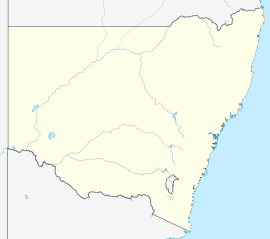Padstow, New South Wales
|
Padstow Sydney, New South Wales |
|||||||||||||
|---|---|---|---|---|---|---|---|---|---|---|---|---|---|

Padstow War Memorial
|
|||||||||||||
| Coordinates | 33°57′21″S 151°1′57″E / 33.95583°S 151.03250°ECoordinates: 33°57′21″S 151°1′57″E / 33.95583°S 151.03250°E | ||||||||||||
| Population | 12,717 (2011 census) | ||||||||||||
| Postcode(s) | 2211 | ||||||||||||
| Location | 22 km (14 mi) south-west of Sydney CBD | ||||||||||||
| LGA(s) | Canterbury-Bankstown Council | ||||||||||||
| State electorate(s) | East Hills | ||||||||||||
| Federal Division(s) | Banks | ||||||||||||
|
|||||||||||||
Padstow, a suburb of local government area Canterbury-Bankstown Council , is located 22 kilometres south-west of the Sydney central business district, in the state of New South Wales, Australia, and is a part of the South-western Sydney region.
Padstow is a mostly residential suburb bounded on the north by Bankstown and on the east by Salt Pan Creek, which is a stream feeding into the Georges River. The M5 South Western Motorway traverses the northern end of the suburb, which is also the location of a number of light industrial facilities.
A number of the streets in the vicinity of Padstow railway station have Egyptian themes as names, including Arab Road, Cairo Avenue, Pyramid Avenue and Sphinx Avenue. To the west of Padstow, on the border with Revesby there is also a group of streets with outer space related names, such as Uranus Road, Mars Street, Neptune Street, Hydrae Street and Vega Street.
Padstow was first named Padstow Park Estate after the town of Padstow in Cornwall, England. The Cornish Padstow's name means "the holy place of St Petrock" (not to be confused with St Patrick, as they are spelled and pronounced differently), an important Cornish saint. The estate included the grants of Simon McGuigan (130 acres), Joseph Cunningham 50 acres (20 ha) and Michael Conroy 40 acres (16 ha) . Timber-getting and farming were the main activities here. The Padstow Park post office opened in 1927 and the first school opened in January 1929. The railway station opened on 21 December 1931, which encouraged development in the area, especially after World War II. The suburb’s name was changed to Padstow in 1939.
...
Wikipedia

